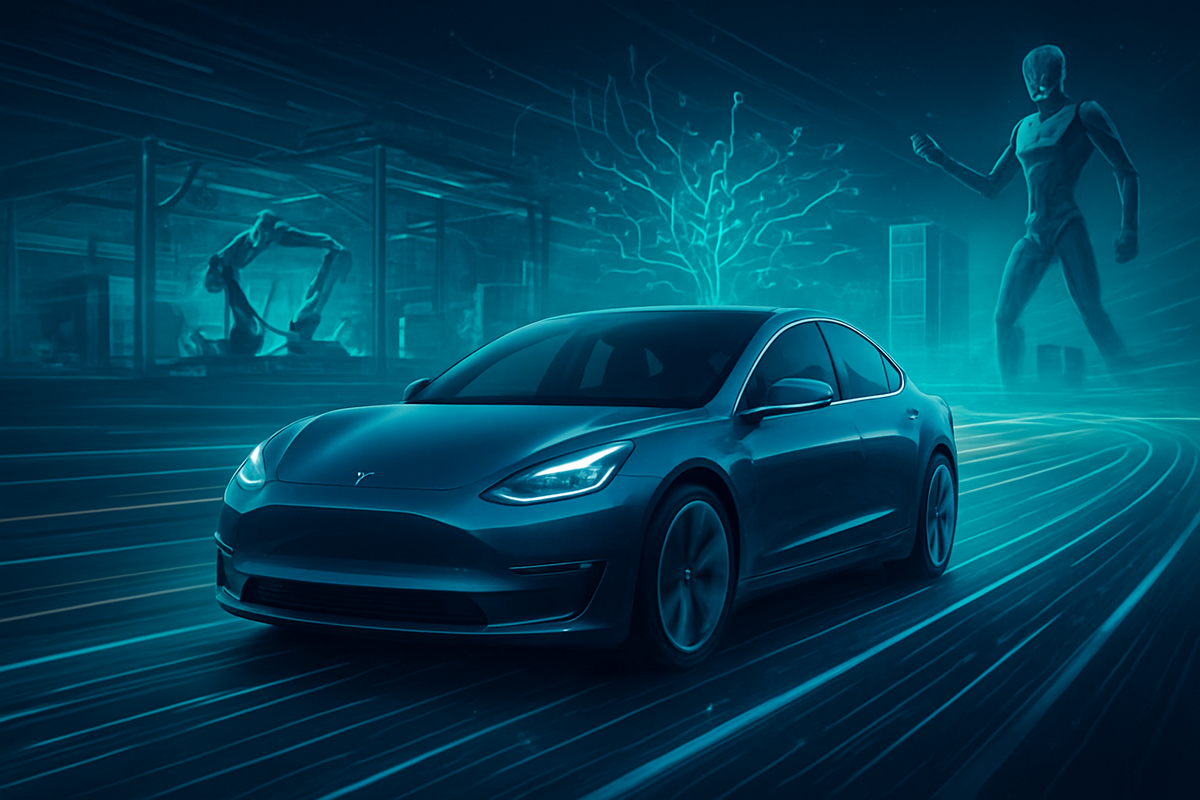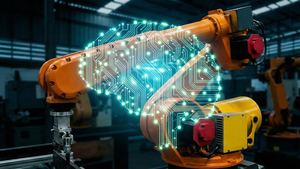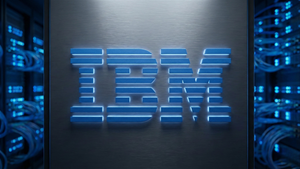
As of November 19, 2025, Tesla (NASDAQ: TSLA) continues to be a formidable force, executing a series of aggressive market maneuvers that are sending palpable ripples through the global automotive and energy sectors. From unprecedented manufacturing efficiencies and ambitious new product launches to dynamic pricing strategies and a relentless pursuit of autonomous driving, the electric vehicle giant is not just reacting to the market; it's actively redefining it. These strategic shifts carry immediate implications, intensifying competition, accelerating the broader transition to electric vehicles, and forcing both legacy automakers and emerging EV players to recalibrate their own long-term strategies.
The company's recent activities signal a decisive pivot towards reasserting market dominance after a period of increased competition. By focusing on volume growth through more affordable models, diversifying revenue streams via its burgeoning energy storage division, and pushing the boundaries of AI and robotics, Tesla is cementing its identity as a multifaceted technology conglomerate rather than solely an automotive manufacturer. This aggressive stance is setting new industry benchmarks for production, technology integration, and market agility, compelling rivals to innovate or risk being left behind in a rapidly evolving landscape.
Tesla's Relentless Drive: Expansion, Innovation, and Autonomy Define 2025
Tesla's strategic roadmap throughout late 2024 and 2025 has been characterized by aggressive expansion, significant product updates, and a pioneering push into advanced AI and robotics. The company's global manufacturing footprint has seen substantial growth, with the Shanghai Gigafactory emerging as a powerhouse. By 2025, it achieved a 40 GWh annual Megapack production capacity and set new records for Model Y output, notably reducing assembly time to a mere 2.5 hours per vehicle through "unboxed parallel assembly." This facility also boasts 95% local sourcing, exporting 30,000 vehicles in April 2025 alone, and saw its Megapack factory commence production in Q1 2025 with a 20 GWh annual capacity. In Europe, Gigafactory Berlin confirmed a major expansion in July 2025, aiming to boost annual production from 500,000 to 800,000 vehicles by Q4 2027, alongside plans for in-house battery cell production. Tesla is also actively scouting for a new Gigafactory location in Southern Europe. Further solidifying its energy ambitions, Tesla's energy storage business deployed a record 12.5 GWh of products in Q3 2025, now contributing approximately 25% of overall company revenue, supported by the expansion of its Houston Megafactory. A notable strategic move, influenced by U.S.-China trade tensions, is Tesla's directive to suppliers to eliminate China-made components from U.S.-built vehicles within one to two years.
On the product front, Tesla is gearing up for significant volume growth. A more affordable model, often dubbed "Model Q" or "Redwood," is slated for launch in the first half of 2025, targeting a $25,000-$30,000 price point, with production potentially starting by summer 2025. This move is crucial for reasserting market share in increasingly competitive segments. The Model Y (NASDAQ: TSLA) is also receiving a substantial refresh, codenamed "Project Juniper," expected in the first half of 2025, featuring a new exterior design, updated interior amenities like RGB ambient lighting and a rear screen, mirroring the Model 3 Highland updates. A new Standard Rear-Wheel Drive Model Y variant was introduced in 2025 at $39,990, offering an EPA-estimated 321 miles of range, though the previous Standard Range battery pack has been discontinued. Looking beyond traditional vehicles, Tesla targets volume production of its Cybercab robotaxi by 2026, aiming for 2 million units annually, with limited production possibly commencing by late 2025. External deliveries of the Optimus humanoid robot are also anticipated to begin in late 2025.
Tesla's pricing strategy has remained dynamic, characterized by frequent fluctuations throughout late 2024 and 2025. While price cuts in April 2024 for Model Y, X, and S aimed to stimulate demand, subsequent price hikes for the Model 3 Long Range and recent increases in lease rates for Model 3, Model Y, and Cybertruck in November 2025 illustrate a complex balancing act between market share and profitability. These rapid adjustments often create uncertainty for consumers and impact the used car market. Crucially, Tesla has made significant strides in autonomous driving, rolling out major upgrades to its Full Self-Driving (FSD) system, including FSD Supervised 12.5 in Q3 2024 and FSD v14.x in 2025. These updates incorporate advanced AI parameters and enhanced video compression, aiming for a tenfold increase in safety. The company is actively testing unsupervised robotaxis in Phoenix, Arizona, and engaging with California regulators, with a roadmap to introduce "FSD Unsupervised" in select cities. Elon Musk has even hinted at "text and drive" functionality by the end of 2025 with FSD v14.2, aiming to make Tesla cars feel "sentient." These developments underscore Tesla's unwavering commitment to leading the charge in AI and autonomous technology, positioning it as a key player not just in EVs but in the broader future of transportation and robotics.
Winners and Losers: Tesla's Ripple Effect Across Public Companies
Tesla's (NASDAQ: TSLA) aggressive market strategies in late 2024 and 2025 are creating a seismic shift across various industries, delineating clear winners and losers among public companies. The impact extends beyond traditional automotive rivals, touching ride-hailing services, autonomous driving tech firms, and even AI and robotics suppliers.
Among the most significant losers are traditional automakers, including giants like Volkswagen (XTRA: VOW3), General Motors (NYSE: GM), Ford (NYSE: F), and Toyota (NYSE: TM). Tesla's relentless price cuts, particularly on models like the Model Y (NASDAQ: TSLA), Model S (NASDAQ: TSLA), and Model X (NASDAQ: TSLA), have ignited a brutal price war, compressing profit margins across the industry. This makes it increasingly challenging for legacy players, many of whom are already heavily invested in their own costly EV transitions, to compete on price. While Tesla's U.S. EV market share has declined from nearly 75% in early 2022 to below 40% by August 2025—indicating increased competition for Tesla itself—traditional automakers must now intensify their efforts to capture the growing non-Tesla EV market while simultaneously streamlining their operations to match Tesla's manufacturing efficiencies. Companies perceived as lagging in EV adoption or over-reliant on internal combustion engines (ICE) face significant headwinds, with their stock prices vulnerable to downward pressure.
Chinese EV startups such as Nio (NYSE: NIO), XPeng (NYSE: XPEV), and Li Auto (NASDAQ: LI) also face intensified competition. While some, like BYD (SHE: 002594) and Xiaomi (HKEX: 1810), have demonstrated strong domestic performance against Tesla, the anticipated launch of Tesla's affordable EV ("Model Q") in the first half of 2025, priced under $30,000, directly targets the budget-friendly segment where many Chinese brands excel. This move could pressure their pricing and profitability, especially for those focusing on premium segments like Nio. These companies will need to further differentiate through unique technology (e.g., Nio's battery swapping), design, and comprehensive ecosystems to maintain their competitive edge both domestically and internationally.
The most direct existential threat is posed to ride-hailing companies like Uber (NYSE: UBER) and Lyft (NASDAQ: LYFT) by Tesla's ambitious Cybercab robotaxi initiative. Tesla plans to launch unsupervised, fully autonomous driving services by June 2025, with volume production of Cybercabs slated for 2026. This direct entry into the mobility-as-a-service market, aiming to remove safety drivers by the end of 2025, fundamentally challenges the human-driver-dependent business model of existing ride-hailing giants. While their stocks have seen mixed reactions to robotaxi announcements, the long-term threat is substantial, potentially adding trillions to Tesla's valuation if successful. Uber and Lyft must accelerate their own autonomous vehicle partnerships or development to remain competitive. Similarly, autonomous driving technology companies like Waymo (Alphabet Inc. (NASDAQ: GOOGL) subsidiary) and Cruise (GM (NYSE: GM) subsidiary) face mounting pressure. While they've pioneered self-driving with LiDAR and radar, Tesla's "AI-first," camera-only approach, coupled with its aggressive FSD rollout and potential licensing, creates a fierce competitive environment. These companies must continuously innovate and demonstrate superior safety and reliability to differentiate themselves amidst Tesla's rapid, mass-market deployment vision.
Conversely, several sectors and companies stand to benefit. EV battery manufacturers and raw material suppliers are poised to win from the overall increase in EV production across all brands, driven in part by Tesla's influence and expansion targets. Tesla's strained battery capacity for vehicles, energy storage, and robots signals a high demand environment for battery technology. EV charging infrastructure companies such as ChargePoint (NYSE: CHPT) and EVgo (NYSE: EVGO) will also benefit from the broader adoption of electric vehicles and the industry-wide embrace of the North American Charging Standard (NACS), led by Tesla. While Tesla's Supercharger network remains a dominant force, the unified charging ecosystem will boost demand for all reliable charging solutions.
Furthermore, AI and robotics component suppliers and developers, particularly those providing specialized hardware and software, stand to gain from Tesla's significant investments in AI, FSD, and the Optimus humanoid robot. Companies like NVIDIA (NASDAQ: NVDA), known for its advancements in robotics platforms, are well-positioned to capitalize on the growing demand for AI chips and sophisticated sensors. Finally, some traditional automakers like General Motors (NYSE: GM) and Ford (NYSE: F), despite the broader challenges, are showing signs of strategic adaptation. They have aggressively ramped up their EV offerings, leveraging their manufacturing expertise and extensive dealer networks, and are actively gaining market share from Tesla in the U.S. Their adoption of NACS for charging further enhances the appeal of their EVs by providing access to Tesla's robust Supercharger network. Similarly, Hyundai (KRX: 005380) and Kia (KRX: 000270) continue to gain market share with popular EV models, positioning themselves as strong contenders through design, competitive pricing, and NACS compatibility. These companies, by successfully navigating the EV transition, could see positive impacts on their stock valuations.
Wider Significance: Reshaping Industry Paradigms and Regulatory Landscapes
Tesla's (NASDAQ: TSLA) latest market maneuvers are not merely tactical adjustments; they are profound strategic shifts that are actively reshaping broader industry trends, creating significant ripple effects across competitors and partners, and prompting critical regulatory and policy considerations. As of November 19, 2025, Tesla's actions are solidifying its role as a benchmark for innovation, efficiency, and technological integration in the automotive and energy sectors.
One of the most significant trends amplified by Tesla is vertical integration and smart manufacturing. The extensive expansions at Gigafactory Nevada (focusing on 4680 battery cells and Tesla Semi), Gigafactory Berlin (targeting 800,000 vehicles annually and localized Cybertruck production), and Gigafactory Shanghai (a high-efficiency export hub with 95% local sourcing and Megapack production) underscore a deep commitment to controlling the entire value chain. This strategy, increasingly emulated by other automakers, aims to secure supply chains, reduce costs, and accelerate innovation, particularly in critical areas like battery technology. Tesla's use of digital twins, advanced robotics, and AI-driven quality control in its factories sets a new standard for efficiency and sustainability in EV production, pushing rivals to invest heavily in their own advanced manufacturing capabilities.
The introduction of new products aligns with and drives several key trends. The affordable EV ("Redwood"), aimed at a mid-2025 production start with a target price around $25,000, signals a decisive move towards mass-market accessibility. This directly addresses the global trend of democratizing EV ownership, expanding beyond the premium segment and intensifying competition with budget-friendly EVs from manufacturers like BYD (SHE: 002594). The Cybercab, a fully autonomous two-passenger vehicle with no steering wheel or pedals, set for production before 2027, is a bold leap into the mobility-on-demand services trend, threatening traditional ride-hailing models and accelerating the race for Level 4/5 autonomous driving. Furthermore, the mass production of the Optimus humanoid robot, with a dedicated plant at Giga Texas aiming for 10 million units annually by 2027, signifies Tesla's commitment to the broader AI-driven automation and robotics trend, extending its influence beyond vehicles into general-purpose labor.
Tesla's dynamic pricing strategy, applied to both vehicles and, notably, its Supercharger stations, reflects a broader industry move towards demand-responsive services. By adjusting charging costs based on demand and time of day, Tesla is not only optimizing grid reliability and energy management but also positioning itself as a key player in sustainable energy infrastructure. This could influence other charging network providers to adopt similar models, fostering more efficient energy consumption. The company's relentless advancements in Full Self-Driving (FSD) and AI, with FSD (Supervised) V14.1.4 demonstrating enhanced object detection and safety, and a global rollout underway, align with the accelerating trends of AI-driven automotive innovation and software-defined vehicles (SDVs). Tesla's claim of FSD AI being "many times safer than human drivers," backed by billions of miles of data, is a critical factor for regulatory approval and public acceptance, pushing the entire industry towards more sophisticated AI integration in vehicles.
The ripple effects on competitors are profound. Tesla's pricing strategy and the "Redwood" project intensify pricing pressure on all automakers, compelling them to develop their own lower-cost EV offerings. The continuous FSD and AI advancements accelerate the technological race in autonomous driving, forcing companies like Waymo (NASDAQ: GOOGL) and Cruise (NYSE: GM) to innovate even faster. The success of Tesla's vertical integration strategy is also influencing traditional automakers to explore similar approaches, seeking greater control over critical components like batteries and software. Geopolitical tensions, particularly against Chinese EVs, may lead to market fragmentation, potentially slowing the adoption of advanced EV technologies in certain regions. For partners, Tesla's directive for US suppliers to avoid China-made components signals a broader shift towards regionalized supply chains, creating both challenges for existing partners and opportunities for new domestic suppliers. The dynamic pricing at Supercharger stations could also influence other charging network providers to adopt similar demand-responsive pricing models.
From a regulatory and policy perspective, Tesla's advancements, especially in robotaxis and FSD, raise complex questions. Liability frameworks for accidents involving autonomous vehicles are still evolving, with governments and courts grappling with how to assign responsibility. Safety regulations are under intense scrutiny, with regulators worldwide closely monitoring autonomous technology and potentially requiring exemptions from existing Federal Motor Vehicle Safety Standards (FMVSS) for truly driverless operations. The debate over local vs. federal control in regulating robotaxi services is ongoing, and ethical AI considerations, such as ensuring fairness and avoiding biases, are paramount. Furthermore, the potential for job displacement among human drivers due to widespread robotaxi adoption could trigger significant regulatory pushback. On the manufacturing front, rising trade barriers and environmental regulations are influencing global automotive supply chains and manufacturing strategies, driving companies like Tesla to reduce reliance on specific regions and embrace more sustainable processes.
Historically, Tesla's impact can be compared to transformative moments in the automotive industry. Its pursuit of an affordable EV echoes Henry Ford's introduction of the Model T, which democratized car ownership through mass production. Tesla's role as a disruptive innovator, a pure-BEV startup becoming a global force, is akin to how companies like Volkswagen (XTRA: VOW3) or General Motors (NYSE: GM) redefined segments in their eras, though Tesla's direct-to-consumer model and continuous over-the-air software updates represent a distinctly modern disruption. Its emphasis on software-defined vehicles and AI draws parallels to how tech giants like Apple (NASDAQ: AAPL) have leveraged technology to redefine product value and customer experience in other sectors. These precedents highlight that Tesla is not just participating in an industry shift but is actively catalyzing a fundamental re-evaluation of how vehicles are designed, manufactured, sold, and operated, with lasting implications for the global economy.
What Comes Next: A Transformative Path for Tesla and the Auto Sector
The coming years promise to be a period of unprecedented transformation for Tesla (NASDAQ: TSLA) and the entire automotive sector, driven by Tesla's aggressive strategic pivots in late 2024 and 2025. Both short-term adaptations and long-term visions are being shaped by manufacturing scale, product diversification, and advancements in AI and autonomy, creating a landscape fraught with both immense opportunities and significant challenges.
In the short-term, Tesla's manufacturing expansions are set to dramatically increase its global output. Plans for 10 new Gigafactories worldwide, including significant facilities in Mexico (500,000 vehicles annually by 2026), India, and two additional plants in China, alongside the expansion of Gigafactory Berlin and the Nevada Gigafactory (for heavy-duty semi-trucks and 100 GWh/year battery manufacturing), aim to push Tesla's global capacity to over 3 million vehicles annually. This scale is crucial for supporting its ambitious product roadmap and achieving economies of scale. The immediate impact will be felt with the rollout of the refreshed Model Y ("Juniper"), which launched in China in February 2025 and subsequently in North America, featuring significant aesthetic and functional upgrades to maintain its competitive edge. More critically, the affordable EV, likely a stripped-down Model Y variant or the long-rumored "Model 2" around $25,000, is expected to broaden market access significantly, directly challenging budget-friendly EVs from competitors. Tesla's dynamic pricing will continue to be a tool for managing demand and competition, with aggressive retail and financing incentives already seen in August 2025.
Looking long-term, Tesla's vision extends far beyond traditional car manufacturing. The Cybercab, officially unveiled in October 2024 as a fully autonomous robotaxi without a steering wheel or pedals, is slated for definitive production in Q2 2026. Its widespread deployment hinges on securing federal regulatory approval, which remains a substantial hurdle. If successful, the Cybercab, optimized for minimizing cost per mile, could fundamentally disrupt the personal ownership and ride-hailing markets. Even more ambitious is the Optimus humanoid robot, which has seen significant advancements (Gen 2) and internal deployment in Tesla's battery production workshops. With a dedicated plant under construction at Giga Texas aiming for 10 million units annually by 2027, Optimus could become a significant revenue driver, potentially accounting for 80% of Tesla's future value according to some analyses. This signals a strategic pivot towards general AI and robotics as core pillars of Tesla's future. Furthermore, the ongoing advancements in Full Self-Driving (FSD), with the planned introduction of "FSD Unsupervised" in select cities and the exploration of licensing this technology to other automakers, could unlock significant new revenue streams and solidify Tesla's leadership in autonomous technology, despite intensifying regulatory scrutiny, such as the NHTSA probe into 2.88 million FSD-equipped Tesla vehicles.
For the broader auto sector, these moves necessitate significant strategic pivots and adaptations. The slowing growth in pure EV sales, coupled with reduced incentives and intensifying price wars (especially from Chinese manufacturers), demands a rethinking of EV strategy. Automakers must balance ambitious EV targets with pragmatic approaches, including a renewed focus on profitable hybrid offerings and more affordable EV models to stimulate demand. Flexible production platforms capable of efficiently producing ICE, hybrid, and electric vehicles will be crucial for adapting to evolving consumer preferences and regulatory shifts. Software and AI investment will no longer be optional; it's essential for creating differentiated products, enhancing safety, and unlocking new revenue streams through software-defined vehicle capabilities and subscription services. Building resilient and localized supply chains, diversifying suppliers, and leveraging advanced analytics will be critical to mitigate future disruptions and manage costs. Finally, addressing the talent gap in digital transformation, vehicle autonomy, and software development is paramount for sustained innovation and competitiveness.
Several potential scenarios and outcomes could emerge. One scenario sees Tesla's continued disruption and expansion, solidifying its dominance in EVs, autonomous mobility, and AI-driven automation, with Cybercab gaining traction and Optimus revolutionizing manufacturing. This outcome hinges on Tesla successfully navigating FSD regulatory hurdles and effectively scaling its diverse product range. Another scenario points to a diversified, multi-powertrain market, where pure EVs coexist with strong hybrid and advanced ICE segments due to slower-than-anticipated full EV adoption, allowing traditional automakers to regain market share with compelling mixed offerings. A third, more challenging scenario, involves intensified price wars and consolidation, where aggressive competition leads to significant margin erosion and industry consolidation, forcing many players to struggle. Lastly, regulatory roadblocks and a slower autonomy rollout could occur, where stringent responses to FSD safety concerns delay widespread deployment of unsupervised autonomous driving, pushing back Tesla's revenue projections from these segments and impacting investor confidence. The coming years will be a dynamic interplay between Tesla's bold innovations and the adaptive responses of the traditional automotive giants, shaping a diverse and increasingly electrified mobility landscape.
Comprehensive Wrap-up: Tesla's Enduring Impact and the Road Ahead
As of November 19, 2025, Tesla's (NASDAQ: TSLA) latest market moves underscore its enduring, yet evolving, role as a dominant force in the global economy. The past year has been a period of intense strategic execution, marked by aggressive manufacturing expansions, a refreshed product lineup, dynamic pricing, and relentless pursuit of AI and autonomous technologies. While the company navigates an increasingly competitive EV landscape, its actions continue to send reverberations across the automotive, energy, and technology sectors, fundamentally reshaping industry paradigms and setting new benchmarks for innovation and efficiency.
Key Takeaways: Tesla's strategy is characterized by a dual focus: maintaining its leadership in electric vehicles while aggressively expanding into AI, robotics, and energy solutions. Despite experiencing a mixed performance, including a Q1 2025 dip in deliveries, Tesla demonstrated remarkable resilience with record Q3 2025 deliveries, partly fueled by strategic pricing and new affordable variants of the Model 3 (NASDAQ: TSLA) and Model Y (NASDAQ: TSLA). The company's relentless drive for vertical integration is evident in its global Gigafactory expansions and efforts to localize battery and component production, aiming to de-risk supply chains and boost efficiency. Beyond vehicles, Tesla's energy storage division has emerged as a "silent giant," crucial for grid-scale solutions, while its advancements in Full Self-Driving (FSD) and the ambitious Optimus humanoid robot project position it as a "physical AI" powerhouse, signaling a strategic shift beyond purely automotive manufacturing. The aggressive pricing strategy, while boosting sales, has intensified industry-wide price wars, impacting margins for all players.
Market Moving Forward: The EV market is entering a "recalibration phase," characterized by intense competition and a moderation of previously explosive growth rates. Tesla's strategic emphasis on affordability through new models, coupled with its leadership in advanced software and AI, will be critical for navigating this evolving landscape. The broader energy transition will see Tesla's energy storage solutions playing an increasingly vital role in grid stability and renewable integration. The automotive industry will continue its inexorable shift towards software-defined vehicles, with over-the-air updates and advanced driver-assistance systems becoming standard consumer expectations. This necessitates significant investment from traditional automakers in software capabilities and new business models.
Final Thoughts on Significance and Lasting Impact: Tesla's most profound and lasting legacy is its indelible reshaping of the automotive industry by pioneering EVs as desirable mainstream products and putting sustainability at the forefront of global manufacturing. Its innovations in direct sales, over-the-air software updates, advanced battery technology, and robust charging infrastructure have set new benchmarks that competitors are compelled to follow. Beyond vehicles, Tesla's expansion into energy storage, AI, and robotics cements its role as a technology ecosystem builder, aiming to revolutionize transportation, energy generation, and automation, driving a future of sustainable abundance.
What Investors Should Watch For in Coming Months: Investors should closely monitor several key areas:
- Production and Delivery Numbers: The ability to sustain the Q3 2025 delivery momentum, particularly with the Model 3 and Y Standard variants, and the successful ramp-up of anticipated more affordable models will be crucial for revenue growth.
- Profit Margins: With continued aggressive pricing, the impact on Tesla's profit margins will be a critical indicator of its financial health and operational efficiency.
- Robotaxi and FSD Progress: Significant advancements and widespread regulatory approvals for the Robotaxi service and Full Self-Driving technology will be major catalysts for investor sentiment and valuation.
- Optimus (Humanoid Robot) Development: While a longer-term bet, any concrete progress or commercialization plans for Optimus could significantly impact the company's valuation as an AI and robotics leader.
- Competition and Market Share Trends: Continued monitoring of Tesla's market share against rapidly advancing traditional automakers and emerging EV players, especially in key markets like the U.S., Europe, and China.
- Supply Chain Resiliency: Progress in localizing battery and component production (e.g., Texas lithium refinery, Nevada LFP lines) and diversifying away from specific geopolitical dependencies will be important for cost control and stability.
- Regulatory and Macroeconomic Environment: Changes in government incentives, tariffs, interest rates, and overall consumer spending will continue to heavily influence EV demand and Tesla's profitability.
This content is intended for informational purposes only and is not financial advice





